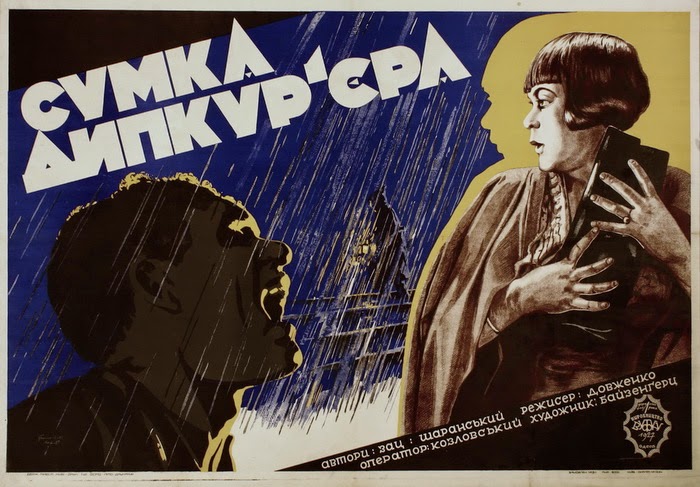+ FOUND +

The Diplomatic Pouch
1927, First Film Studio VUFKU (Odesa), 7 parts / 1,646 m, 48 min
It is an adventure film about the Soviet Union’s attempts to organise a world proletarian revolution.
The Soviet embassy in England sends two couriers with diplomatic mail to Leningrad (now – Saint-Petersburg). The inspector of security police, White, and a group of policemen attack the Soviet diplomatic couriers at night. One of the couriers is killed in the unequal battle, the second one is heavily injured and falls out of the train. The documents get to an English trackman, who gives them to his son, a sailor in Portsmouth; a steamship is about to depart for Leningrad from that city. Police officers find out that the English steamship hides the Soviet diplomatic mail but cannot catch the package. Risking their lives, sailors deliver the mail to Leningrad.
The film plot is based on a true story of two Soviet diplomatic couriers, Theodor Nette and Iogann Mahmastal, who were attacked abroad on 26 February 1926.
This is the last Dovzhenko’s “European” film made within genre conventions typical for European and American filmmaking.
Dovzhenko was familiar with the diplomatic job very well, since in the early 1920s he took diplomatic positions in Poland and Germany. The aesthetic concept of The Diplomatic Pouch was strongly influenced by German expressionism. The cameraman Mykola Kozlovskyi used some inventive framing techniques, unusual angles, night shooting and other expressionist effects in the film.
It was the first and the last time, when Dovzhenko played an extra in his film. Although the director called The Diplomatic Pouch his “mediocre début”, if not for this film we would have had neither the “first Ukrainian film” Zvenyhora, nor the first poetic Ukrainian director Oleksandr Dovzhenko.
The script written by Borys Sharanskyi and Moisei Zats and revised by Oleksandr Dovzhenko was approved by the Higher Repertoire Committee (protocol No 2103) on 23 June 1926. The shooting began on 15 November 1926 and finished on 05 February 1927. The film was released on 24 March 1927 in Kyiv and on 24 January 1928 in Moscow. The film has survived without the first and second parts.
Five parts of the film are stored at the Cinema Fund of the National Oleksandr Dovzhenko Centre.